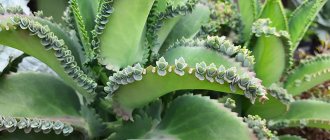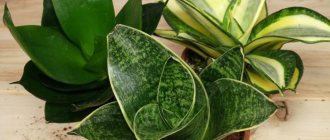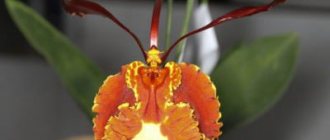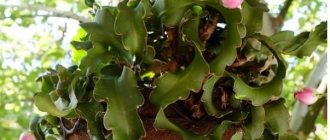Growing muraya at home
At home, caring for Muraya will not require you to spend a lot of time and effort. The only thing that is necessary is the creation of specific conditions to which it is accustomed.
This tree can reach 1.5 meters in height. It is also distinguished by the frequency of changes - first there will be a green crown, then snow-white flowers, then unevenly ripening fruits. Fully ripe berries have a blood-red color, which gives the plant a special beauty.
There are a large number of stories and legends about him. Some say that even during the reign of emperors in China, murai guards were equated to the emperor's guard. People believed that this plant had the power to prolong youth, cure cancer and grant eternal immortality. It was also noted that the aroma and infusion from the leaves help not only heal the body, but also the soul.
How to grow muraya? In order to please yourself with this plant at home, you need to know certain features.
Lighting
The Muraya plant is a light-loving plant. That is why for normal growth and development it requires a sufficient amount of lighting. Avoid exposure to direct sunlight.
Diffused light, both western and eastern windows, are best suited. But even with insufficient lighting, it can begin to shed its leaves. During the reduction of daylight hours, it is necessary to provide illumination.
The duration of daylight hours should be 12-14 hours. And then, it will delight you with beautiful leaves, a lush crown, attractive flowers with an unsurpassed aroma and delicious fruits.
Temperature
Even though this is an exotic plant, it does not tolerate heat well.
- Winter temperature should be within 17 °C,
- And for comfortable summer development – no higher than 25°C.
It is also necessary to beware of drafts and sudden temperature changes.
Humidity
This plant is not one of those that requires constant spraying. It tolerates dry air normally, but if this condition lasts for a long time, the leaves may begin to dry out and the flower stalks may fall off.
That is why it is recommended to periodically spray it with warm water. And in order to humidify the air, it is recommended to place a bowl with wet expanded clay next to it.
Watering the plant
For irrigation, use settled soft water at room temperature, which does not contain chlorine. You can add a small amount of citric acid or vinegar to the water, this will soften the water.
- In winter, watering is reduced to a minimum and carried out when the top layer dries out.
- In summer, watering should be plentiful, but care must be taken to avoid stagnation of water and waterlogging of the soil.
If the watering regime is violated, this can lead to falling and yellowing of leaves. But waterlogged soil can lead to the development of root rot.
Care during the rest period
A distinctive feature of the evergreen shrub is the absence of a pronounced rest period. If the plant is in comfortable conditions, it has buds, flowers, berry ovaries and ripening fruits all year round.
If desired, the flower can have a short rest in winter. It is enough to move the pot to a room with a temperature of 14-15°C.
Soil and fertilizing
The acidity of the soil for an indoor muraya flower should be in the range of 6 – 7.5 pH. To prepare the nutrient mixture, you need to take turf, leaf soil, humus and sand in a ratio of 2:2:2:1. The soil should be loose. You can also buy a ready-made mixture for citrus fruits and add baking powder to it. Its amount should depend on the age of the plant, the younger the more.
Top dressing
Fertilizer should be applied no more than once a month. It is recommended to alternate mineral and organic fertilizer. When feeding, you must remember the “golden” rule - do not overdo it. And the most important point is the absence of chlorine in the fertilizer. Because it is susceptible to chlorosis.
Transfer
Young plants are replanted annually.
- Containers for transplantation are taken 1-2 cm larger than the previous one each time.
- But adult plants are transplanted once every 2-3 years into the container where they grew before. To carry out this procedure, the transshipment method is often used.
- It is recommended to rid the roots of the old soil and add new soil.
- The root collar must be kept on top of the soil.
Trimming
To enhance branching and make the crown shape lush, it is recommended to pinch each branch during the growing season. But the dwarf form of muraya does not require pruning at all, since it is itself a lush branching shrub.
How and when to replant Muraya
Recommended by topic
Catharanthus Rosemary Hamedorea
Young bushes need annual replanting, plants older than 5 years every 3 or 4 years. The most suitable time for the procedure is the end of March and the beginning of April.
Exotic does not like its roots being disturbed, so transplantation is done using the transshipment method. To transplant a plant correctly, you need to:
- 40 minutes before transshipment, water the bush generously with water at room temperature.
- Place drainage in the new pot at ¼ of the height.
- Cover the drainage with a layer of substrate.
- Tap the old pot from different sides and remove the plant from it together with an earthen lump.
- Place the bush in the middle of the new pot.
- Pour soil into the space between the old lump of earth and the walls of the pot, gently shaking the container.
- Water the flower with settled water at room temperature and place it in a place with diffused light for 2-5 days.
The root collar should be above ground level.
For plants in large tubs, which are difficult to transplant due to their impressive dimensions, the top layer of soil mixture should be removed to a depth of 10 cm and fresh substrate should be added. This easy procedure can be performed 1-2 times a year.
There is no need to replant Muraya too often, since the bush is reluctant to bloom until it has mastered the entire earthen lump. Determining the need for a transplant is quite simple. The plant needs to be watered well, after 40 minutes, knock on the pot and carefully remove the bush with a lump of earth from the container. If the exotic plant has entwined its roots around the entire substrate, it means that it needs to be transshipped. If the root system is just visible through the soil, replanting can be postponed until next year.
Pot
A cramped pot is the best way to get Muraya to bloom profusely. In addition, it serves as a good insurance against overwatering and root rotting.
This bush is clearly too early to replant
In size, the new pot should be only 1.5-2 cm larger in diameter than the previous container.
Soil
Stores sell soil mixtures for orchids and citrus fruits. In terms of nutritional value, composition and pH, they are optimally suited for indoor Muraya.
If you wish, it is easy to make a substrate yourself from turf, leaf soil, coarse sand and leaf humus in approximately equal parts. Young bushes love a looser substrate, so 10% of their soil consists of perlite or vermiculite.
Diseases and pests
Most often it is affected by:
- scale insect
- spider mite
- aphids
- whitefly
- mealybug
In case of exposure, it is recommended to immediately treat with insecticidal preparations.
Among the diseases she is exposed to:
- chlorosis, when growth slows down and leaves turn yellow.
- The question is also often asked: why doesn’t Muraya bloom? The reason for this may be a cramped pot. As soon as you replant and the plant takes root, it will immediately delight you with its flowering
Protecting Murrayya from pests and diseases
Murraya is susceptible to damage by common indoor pests: aphids, whiteflies, spider mites, scale insects and others. In indoor culture, it is forbidden to protect plants from pests and diseases with chemicals due to harm to health. Therefore, young plants are rid of aphids with a warm shower, having first covered the substrate in the pot with film. The scale can be removed manually with tweezers. It is more practical to treat adult plants with biological products that are harmless to humans and animals. According to the recommendations, infected plants can be sprayed with biological products “Fitoverm” or “Entobacterin”. If there are signs of disease (falling of buds, leaves, general wilting), you can spray the plants with biological products “Fitosporin”, “Iskra-Bio” and others.
Medicinal properties: benefits and harms of muraya
The main feature of this plant is that all its components are useful and are used in various fields. These are stems, leaves, roots, and flowers. Due to the fact that they secrete phytoncides and aromatic oils, it is often used to treat:
- cardiovascular diseases: hypertension, ischemia, angina pectoris
- respiratory system problems
- headache
- sore throat, stomatitis
- suffered a heart attack. It is recommended to pour ¼ liter of vodka into 5 tablespoons of leaves and fruits of the plant. Leave in a dark place for 10 days. Take 30 drops every day.
- dermatitis.
- diabetes
This plant is also often used in cosmetology. And many say that daily use of this plant in any form can prolong life.
Despite all the positive aspects, there are some precautions. Do not get carried away with alcohol tincture, as it lowers blood pressure. But basically no contraindications were found.
So grow this plant and enjoy its beauty. You will succeed!
You will also be interested in watching a video about caring for and growing muraya:
Unique properties of Muraya
The plant has interesting, quirky and useful features.
Aroma
The flowers, resembling tiny lilies or white stars, emit a scent that brings to mind the picture of a jasmine bush strewn with flowers. The main note is intriguingly complemented by the scent of citrus or lilac.
The aroma of evergreen exotic lifts the mood, facilitates the process of breathing and the manifestation of weather dependence, the course of coronary artery disease, hypertension, improves sleep, restores peace of mind after stress, relieves headaches and fatigue.
The plant creates a favorable atmosphere in the bedroom, children's room or any other room.
Growth and flowering rates
This indoor beauty grows slowly, and like all representatives of the Rutovs, it grows in waves. Several branches may appear on it, and then the growth process will freeze at one point for several months.
One representative is able to bloom as soon as the bush reaches a height of 30-35 cm, the other will not produce buds, stretching up 1 m. Seedlings from seeds collected from one bush can behave completely differently.
Medicinal properties
Leaves, flowers and fruits contain hesperidin, which strengthens the walls of blood vessels. A tincture of the fruit in alcohol relieves joint pain and alleviates symptoms of cardiovascular diseases.
The pulp of the berries is saturated with biologically active substances and vitamins, so eating it improves the condition of the skin and has a positive effect on digestion.
Muraya does not bloom
Muraya is an evergreen tree or shrub that can grow up to 2 meters in height.
Most often, gardeners grow Muraya paniculata. With proper care, the flower can bloom and bear fruit from early spring to late autumn. This adds a certain zest to the bush. It’s so beautiful when you can simultaneously see snow-white, fragrant flowers and fruits of all shades, from bright red to dark green. Unfortunately, not all lovers of an exotic guest from the tropics can achieve such an interesting effect. What is necessary for its rapid and long-lasting flowering? Naturally, comfortable living conditions and absence of diseases. How to achieve this? Here are some tips.
- Muraya is very sensitive to the right lighting. She feels best in places where the light is bright enough, but direct rays of the sun do not burn the delicate foliage. As a rule, these are south-eastern or western windows. On southern windowsills the flower runs the risk of getting burned, and on northern windowsills the muraya will wither from lack of light. In both cases, you won’t get flowering.
- The tropical guest is partial to moisture, and therefore requires daily and abundant watering. In winter, it is better to reduce it somewhat so that the top layer can dry out slightly.
- Spraying the flower is also vital, especially in winter, when the air in apartments is dried out by heating devices. Too low humidity causes flowers and buds to fall off, as well as spider mite disease.
- Due to the tendency of muraya to chlorosis, watering should be done only with well-settled, or better yet, melt or rain water. For the same reason, chlorine-containing fertilizers should not be used.
- During the growing season, and especially with the beginning of flowering, the plant needs regular alternate feeding with mineral and organic fertilizers. The procedure must be carried out monthly. But remember that an excess of nutrients will lead to the formation of a large volume of leaf mass, and the plant will not have any strength left for flowering.
- Despite its love of moisture, Muraya does not tolerate waterlogging. Therefore, it needs a loose, permeable substrate and a good drainage layer. If there is excessive moisture, the root system rots and the plant faces death. In this case, there is no talk of flowering.
- Muraya, especially at a young age, requires annual transplantation into a larger pot. But if the diameter of the new container exceeds the previous one by more than 2 cm, then in this case the plant will devote all its energy to the development of the root system. Muraya blooms profusely only in cramped pots!
- If the temperature regime is violated, the muraya will also feel unwell. She does not like excessive heat above +25 °C. The plant does much better at lower temperatures, which in winter should not exceed +17 °C. Protect the tropical resident from drafts and other sudden temperature fluctuations. This can lead to loss of flowers and buds, as well as various diseases.
- Muraya flowers have one more feature - they do not tolerate the touch of hands. Enjoy their snow-white petals and wonderful aroma from a distance.
Murraya paniculata: features, types, planting and care
Murraya is an exotic crop. This is a tree with high decorative qualities and a wonderful aroma. Tasty and healthy fruits are another advantage of the culture. In the gardens of our country, you can most often find Murraya paniculata. This article will tell you about the features of this variety and the nuances of its cultivation.
Description
Murraya paniculata (Murraya paniculata from Latin murraya paniculata) belongs to the Rutaceae family. It is often called the imperial tree, which is due to its origin. Once upon a time, the crop was grown only in the palace gardens of Japan and China. Today it can be found not only in Asia, but also in some other places.
In Russia, such trees decorate winter gardens and greenhouses. You can grow the crop in an apartment.
The variety in question received its name in honor of the botanist Yu. A. Murray. It was he who discovered and described it. The culture is evergreen. At home, it is limited to a modest height (up to 1 m). It looks like a mini-tree or spreading shrub.
The leaves are rich green, feathery, oval in shape. They cover the entire area of the shoots. The flowers are snow-white and very beautiful. The petals gracefully bend back. The inflorescences are usually large. Murraya paniculata begins to bloom at the age of five.
Because of its subtle, pleasant aroma, seed producers gave the culture a very symbolic name - “imperial perfume”.
It is believed that the smell emanating from the tree helps cope with depression, reduces headaches, and improves sleep. Another unusual name for the culture is “orange jasmine.” It is due to the visual similarity of the cultures, as well as noticeable notes of citrus in the aroma.
The fruits are orange-red, round berries. They are edible and have a sweet taste. Berries tone the human body, lower blood pressure, and help fight viruses.
In Russia, the crop is rarely grown for medicinal purposes. It is positioned more as an ornamental plant. Nevertheless, by placing such a green “pet” in your home, you can become the owner of a natural mini-pharmacy.
Muraya paniculata is unpretentious and very beautiful. In an indoor microclimate it blooms almost all year round. The main thing is to provide the plant with suitable conditions for its growth and development.
Muraya: description of the flower
Muraya paniculata is most often grown indoors (see photo in the article). It is a fast-growing shrub with feathery, fleshy, deep green leaves. If you rub the plate, you can smell the citrus aroma.
The trunk is embossed, light, marble in color. Young shoots are covered with soft down, adults are smooth.
Snow-white or milky flowers with five petals are formed at the tips of the branches. Single or collected in inflorescences, 1.8-2 cm in diameter. They are replaced by edible elongated berries of a bright scarlet hue, 1.5-3 cm in size, slightly reminiscent of hawthorn in shape. The ripening period lasts 4 months.
Several species of Muraya paniculata are grown at home:
- "Dwarf". It is distinguished by miniature leaves, which are collected in 3-5 pieces and form a complex leaf. The trunk is slightly curved and highly branched. The height of an adult tree is no more than 50 cm.
- Slightly larger than "Min-a-min". Its complex sheet consists of 5-7 plates. The plant is sterile and does not produce seeds when flowering.
- A very tiny variety “Dwarf Compact”. It stretches no more than 15 cm in height, the diameter of the leaves is up to 5 mm.
Very often you can find an advertisement for the sale of the “Dutch” species. In fact, this is not a separate variety, but just a flower brought for sale from abroad.
Muraya Koeniga in nature grows up to 6 meters in height, with a trunk girth of 40 cm. The inflorescences contain up to 80 flowers that emit a strong aroma. Black berries are not eaten. Despite the fact that the pulp is edible, there is a poisonous seed inside the fruit.
Interesting: Ficus benjamina: home care, reproduction, diseases
Interesting! Muraya, also known as Japanese myrtle and orange jasmine, blooms almost all year round. Indian girls decorate their hair with flowers during marriage ceremonies, make living necklaces, and decorate temples and sanctuaries for various holidays and festivals.
Features of caring for Murraya at home
Murraya (muraya) is an exotic citrus tree with very beautiful fragrant flowers and tasty fruits.
Murraya is often called the imperial tree because... It originates from ancient Japan and China.
There the plant was grown exclusively at the courts of emperors. Murraya is not only beautiful in appearance, but also has unique beneficial properties.
Growing this beauty as a houseplant is not difficult if you follow basic care rules.
Below you can see the Murraya in the photo along with flowers:
Description of the plant
Muraya is an evergreen shrub from the Rutaceae family, numbering about 10 different species. In its natural environment it is found in the tropical forests of India, Australia, China, as well as on the islands of Java and Sumatra. This is a citrus plant, which is also known among gardeners as:
- Murraya;
- Murray;
- Mariah;
- ant;
- curry (due to the use of plant leaves to make curry seasoning).
This is interesting! The shrub was named after the botanist, a student of Carl Linnaeus, whose name was Johan Andreas Murray. In this regard, it would be more correct to call the shrub Murraya.
At home, muraya forms a small bush or tree with a thin and flexible trunk, which is covered with light gray bark. Fleshy, oval-shaped leaves with a smooth surface sit on the branches. They are painted in a rich dark green color.
With proper care, muraya blooms all year round. Therefore, you can often observe how buds form on a tree, fragrant flowers bloom and fruits ripen at the same time. The flowers, shaped like a lily, reach 9-10 cm in diameter. Their color is white. After the flower fades, a small edible fruit is formed (its photo is below). It takes 4 months to mature.
Maintenance and care at home
The Murraya flower feels great at home. Muraya needs minimal care. Paniculata including.
How to care? Even a novice gardener can do this. Afterwards you need to transplant, water, fertilize and trim the Murraya. It is very important to provide the plant with the correct location and good soil.
Trimming
Murraya pruning is best done at the end of February. To do this, each branch is shortened by two knots . Only those branches that grow at least 4 leaves, as well as shoots growing inward, are trimmed. Dwarf Murraya does not need pruning.
Watering
Murraya needs abundant watering in summer (3-4 times a week), and moderate in winter (once a week). Reduce watering already in September. Do not allow water to stagnate in the pot.
This can cause root rot and plant death. But excessive drought is also harmful. Water Murraya only with clean, filtered water , free of chlorine. Daily spraying is very important for the plant.
Murraya is fertilized monthly , and during flowering - twice a month. One time they use only organic fertilizers, and the other time only mineral fertilizers.
As the latter, you can use complex fertilizers for bonsai or citrus fruits.
Landing
Murraya is planted in a small pot with many drainage holes. There is no need to buy a spacious container. Murraya will not grow in it until the roots completely fill the pot.
You can make your own soil for Murraya. To do this, you need to take leafy, turf soil, peat and coarse sand in a ratio of 2:2:2:1.
You can take ready-made soil for citrus plants or succulents, but first add coconut fiber or perlite to it.
For young Murraya, the soil should be light and loose, and for an adult it should be denser and heavier. Be sure to place drainage , approximately 1/3 of the volume. The soil can be disinfected with potassium permanganate.
Transfer
The young Murraya needs to be replanted annually. It is enough to replant an adult plant once every 2-3 years. The rest of the time, you can simply update the topsoil.
Houseplant care
Exotic muraya feels good in certain conditions; create a suitable atmosphere for it and it will delight you for many years.
Illumination
The plant is best suited to diffused light, but in summer you can take it outside or to the balcony in direct sunlight for 2-3 hours a day in the mornings or evenings. The rest of the time, keep the pot on a south window.
Temperature
In summer, the ideal temperature for muraya is 23-25 degrees. At this time, the plant blooms profusely and needs additional care. In winter there is a period of rest, so the temperature should be reduced to 17 degrees.
Trimming
Muraya paniculata does not require pruning.
Periodically, you can get rid of old branches so that the young ones get more nutrients.
How to water?
From spring to autumn, the tree must be watered abundantly, but make sure that water does not stagnate in the soil. It is ideal to do the next watering when the soil is one-third dry. In winter, the plant is watered much less often, once every 2 weeks is enough.
Air humidity
It is not necessary to create additional air humidity for muraya, even under heating conditions with radiators. But it doesn’t hurt to spray the leaves to give them a fresh look. Muraya is good about such procedures.
Fertilizer
In winter, the plant does not need fertilizer, but during flowering and fruit ripening it must be done.
From April to September, twice a month you need to feed the muraya with liquid complex fertilizers
It is important to ensure that they contain magnesium and calcium. It is also recommended to alternate organic and mineral fertilizers.
Transfer
Young muraya bushes, which are from 1 to 3 years old, must be replanted annually
Mature plants over 5 years old are replanted if the soil is damaged. The rest of the time, it is enough to change the top layer of soil annually.
When replanting, it is important to choose the right pot and soil. The pot must be stable so that the growing plant does not accidentally tip over
Its size depends on the size of the root system. After replanting, there should be approximately 1/3 of free space left in the pot for soil. As for the soil, the mixture should consist of:
- 1 part leaf soil;
- 1 part of turf land;
- 1 part sand;
- 0.5 parts of humus.
From the video you will learn how to transplant muraya:
Bloom
At home, muraya blooms as profusely as in the wild. The period begins in the spring. The inflorescences of the plant are cream-colored and reach a diameter of 2 centimeters. During the flowering period, muraya smells abundantly. 3-4 days after the bud opens, red berries appear in its place. They ripen for several months, after which they become edible.
Why might it not bloom?
Muraya may not bloom for several reasons:
- some varieties begin to bloom at the age of 3-4 years;
- the plant does not have enough nutrition or space in the pot.
Do not lose sight of this symptom; if you notice a lack of flowers, take measures to eliminate the problem, otherwise the plant will die ahead of schedule.
Growing from seeds
fresh for planting , as they quickly lose their viability. It is best to place a pot with a plant on a western or eastern window.
Murraya grows flowers within 3-5 months after planting, and blooms for a very long time, from March to October. After which, large orange-red berries appear. It is the seeds of these berries that are the seeds.
Reproduction
Murraya can be propagated by cuttings and seeds . The plant does not reproduce well from cuttings, and they take a long time to take root. They are cut off from the top of the shoot and rooted in damp sand, under the film.
After a month, the roots appear, and the Murraya is transplanted into a separate pot.
The seeds of the plant are cleared of pulp, dried and planted in spacious containers filled with prepared soil. Leave them in a well-lit place, at t + 23-25C, cover with glass, and periodically spray.
In a couple of weeks, the first shoots of Murraya will appear. They are placed in small plastic cups.
Temperature
The optimal condition will be a temperature no higher than +25C in summer, and about +15-17C in winter. The plant does not like drafts or sudden temperature changes.
Lighting
It needs to be shaded a little from direct sunlight.
But there must be at least 14 hours of daylight. Therefore, if necessary, Murraya is illuminated with special lamps.
Reproduction
Muraya is propagated by cuttings and seeds . Cuttings are taken only from adult plants, cut off and placed in a container with water, after which they wait for roots to form. When the roots appear, the cuttings are planted in separate pots.
In the seed propagation method, seeds from muraya fruits are used. They are planted in the soil and wait for seedlings to emerge. This process usually takes about a month. Bushes are formed over 3-4 months.
Benefits and harms
Muraya and beneficial properties are practically synonymous. It is not for nothing that Murraya is considered a medicinal and healing plant. It is widely used in folk medicine.
Medicinal properties
If you chew fresh Murraya leaves, you can get rid of headaches and toothaches, and cure stomatitis . They help cope well with insomnia and gastritis.
Applying the leaves to sore joints with arthritis or arthrosis relieves swelling and pain.
Gargling with a decoction of Murraya leaves is an excellent treatment for sore throat. Drinking a tincture of Murraya leaves with the addition of rosemary helps lower blood sugar levels, relieves arrhythmia and improves the functioning of the circulatory system.
berries also have benefits. It is enough to eat 3-4 pieces a day to forget about fatigue and reduce blood pressure. Due to the high content of antioxidants, these berries can significantly prolong youth and slow down the aging process of the body.
The delicate aroma of Murraya flowers has a calming effect and reduces the risk of pulmonary and heart diseases. According to beliefs, growing Murraya at home will ensure family well-being and good luck in love.
Murraya species
Murraya is a tropical plant. Its distribution area occupies the regions of South and Southeast Asia, Indonesia, the Philippines, and the Polynesian Islands. In the system of plant world order, it belongs to the Rutaceae family, where Murraya (Murraya) is classified as a separate genus. The genus has about 8 species, the most famous are Murraya Koenig and Murraya paniculata.
Murraya Koenig
Murraya Koenig is better known as black murraya, common in tropical and subtropical regions of India and Sri Lanka. The tree is 3-6 m in height with long, complex-pinnate leaves. The leaves in a compound leaf are arranged in pairs (11-20 pairs) along the stem. Murraya Koenig is characterized by elongated leaf blades of complex leaves. The flowers are small, light cream or white, and have a rich but pleasant aroma. The fruit is a black or dark blue berry. The fruits are edible, but the seeds are poisonous.
Application
- The leaves have an aromatic aroma and form part of the spicy curry seasoning used in almost all dinner dishes to increase appetite in the hot, humid regions of its home range. Fresh leaves are added to all dishes, giving them a specific delicate aroma.
- By steam distillation, an oil is obtained from the leaves of Murraya nigra, which is used as a fragrance in the production of soap.
- The hard, durable wood was previously used to make agricultural crafts and tools.
- The leaves are widely used in Ayurvedic and traditional medicine in South Asian countries as a medicinal herb with anti-cancer and anti-diabetic properties. Decoctions are also prepared from the leaves to treat the gastrointestinal tract and some skin diseases.
Murraya paniculata
In indoor culture, Murraya paniculata (Mogra) is mainly widespread. It has many synonyms: exotic murraya, orange jasmine, orange jasmine, Japanese myrtle. Since mogra blooms almost constantly, in India it is used for decorations and offerings of living necklaces. During marriage ceremonies, women decorate their hair with Mogra flowers; it is used to decorate temples and sanctuaries, during various holidays and festivals. The sweet scent of flowers is used instead of perfume.
Murraya paniculata is a tub crop for indoor spaces up to 0.7-1.5 m in height. Formed as a bush, tree or bonsai. The trunk and perennial branches are embossed, white-marble color. The leaves are dark green, shiny, small in size, shimmer with gold in bright light and wonderfully set off the snow-white flowers, single or in apical corymbose inflorescences. It blooms almost all year round, sometimes with a 2-3 month break (November-January). The flowers have a wonderful scent. Even one flower fills the room with a lemon-jasmine (closer to jasmine) aroma that does not cause allergic headaches.
It is distinguished by very early flowering, occurring 2-4 months after germination. If during this period the plant did not form a single bud, it means that a false Murraya was purchased. The fruits are bright red, 1.5-3.0 cm, with an edible pericarp, do not fall off for a long time, and have a strong tonic property.
Genghis Khan and Alexander the Great took a drink or ate several fruits before decisive battles. Genghis Khan's warriors, to raise their spirits on long campaigns, took with them the fruits of murraya, calling it foreign.











